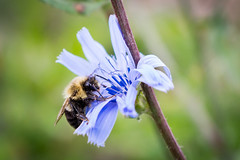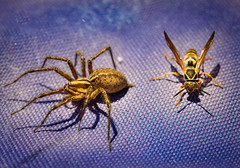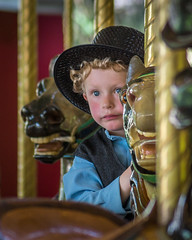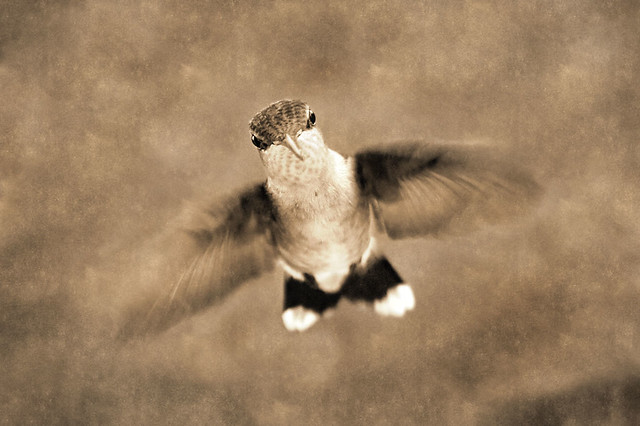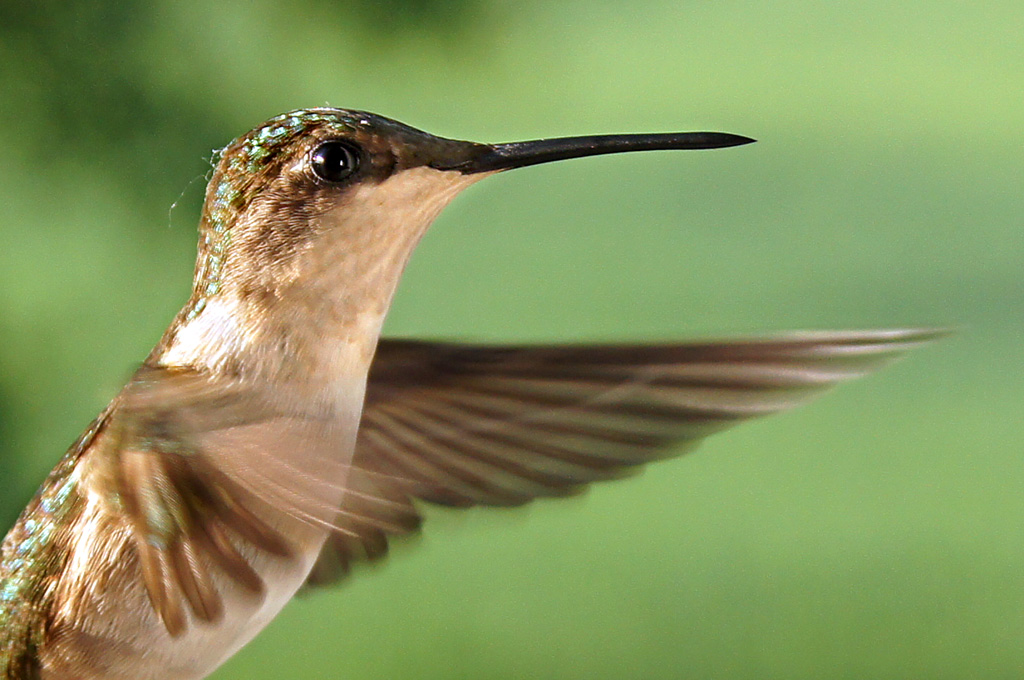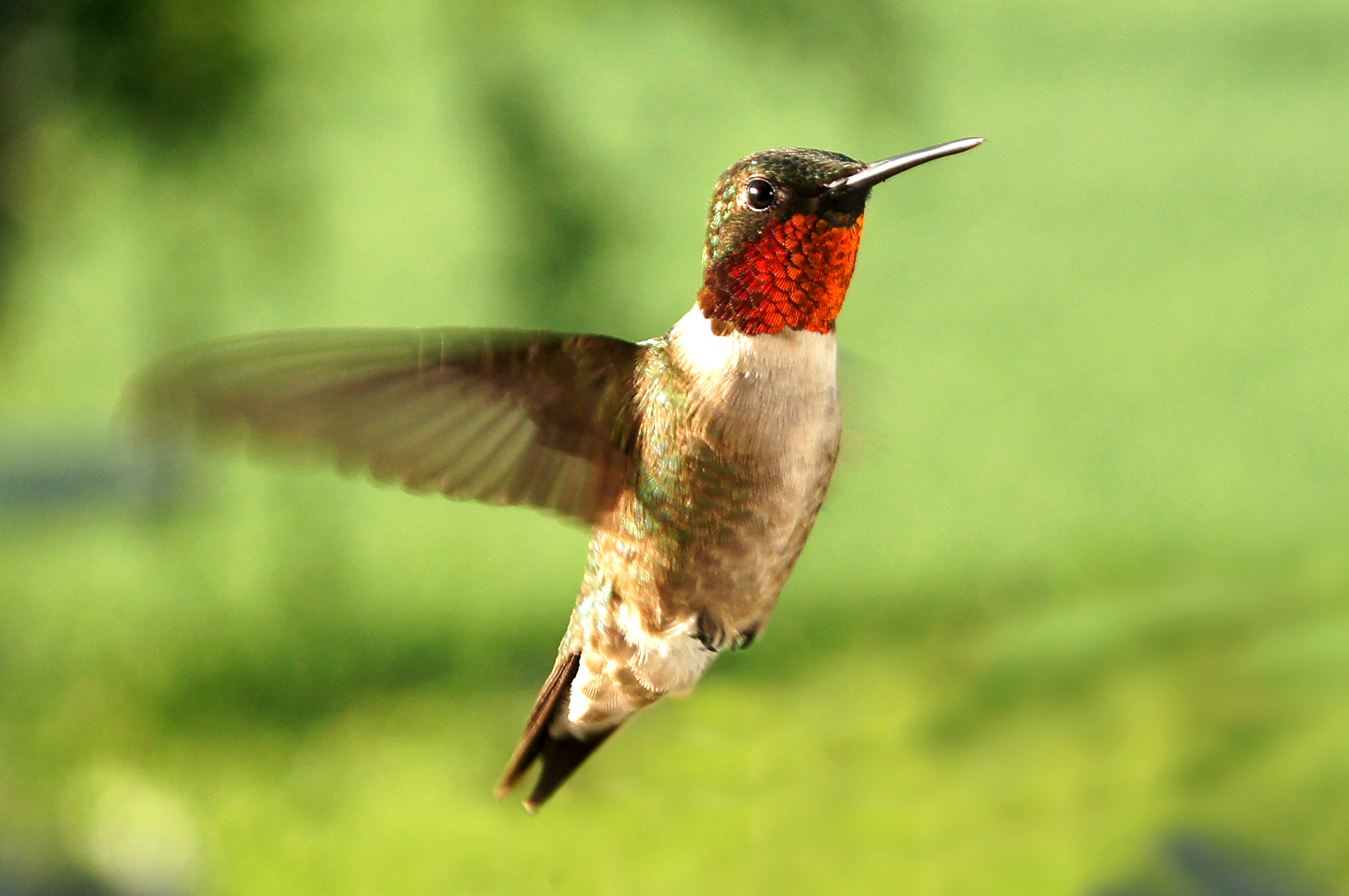Hummingbird
Enigma on Wings
I spent some time the other day taking my first hummingbird photos of the season. This is a female, ruby-throated hummingbird looking straight at the camera. The wings are just a blur.
To get this unique look, I took all the color out of the original image, added a bit of sepia tone and then a texture effect.
To get a better view, click on the image for a larger version.
In His Element
One of my greatest joys (and challenges) is catching a hummingbird in focus. This male Ruby-Throated hummingbird seems to be in his element.
There are no hummers hanging around this time of year. I’m looking forward to their return. I caught this one zipping by my window with the early morning sunlight on his back last July.
It’s worth seeing this one enlarged. Just click on the image.
Pretty Profile
It has been at least a couple of weeks since we’ve seen a hummingbird at our feeders. They’ve headed south for the winter…already.
This is one of the regulars that we will miss – a female ruby-throated hummingbird.
I like this photo because of the clear view of her pretty face and the blurred effect of her right wing. Also note the tiny strand of spider web dangling off the back of her head. Find out why there might be a spider web attached to a hummingbird. I detail it in a previous post – Click Here.
To see a larger version of this image, click the photo above.
Bowing at the Altar of Sweet
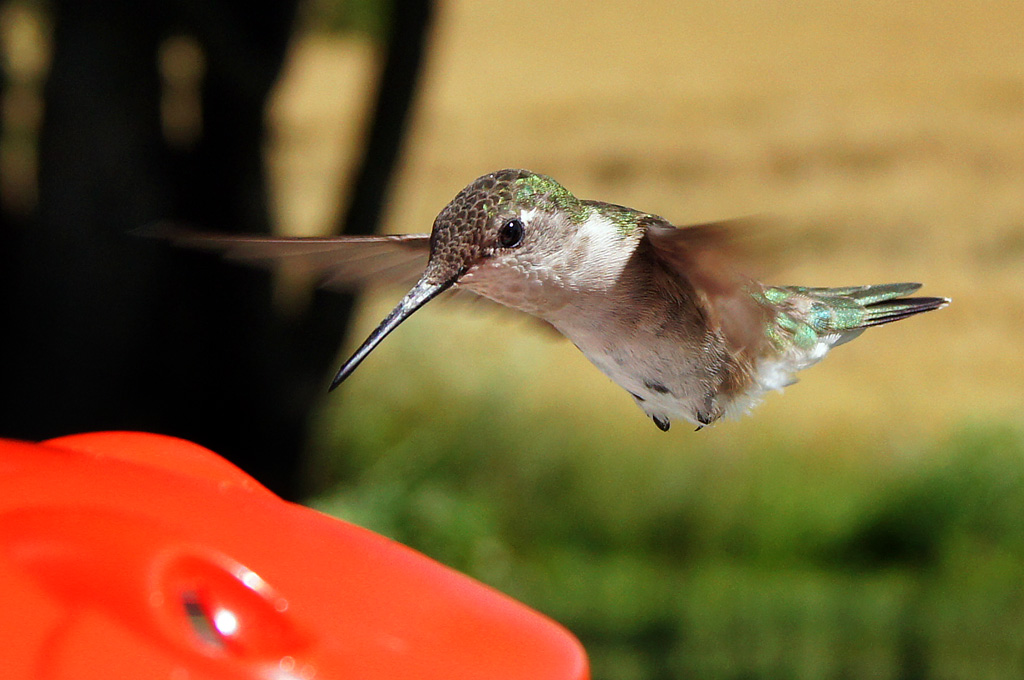
This pretty little gal is coming in for a little nectar refreshment. This is a female, Ruby-Throated Hummingbird.
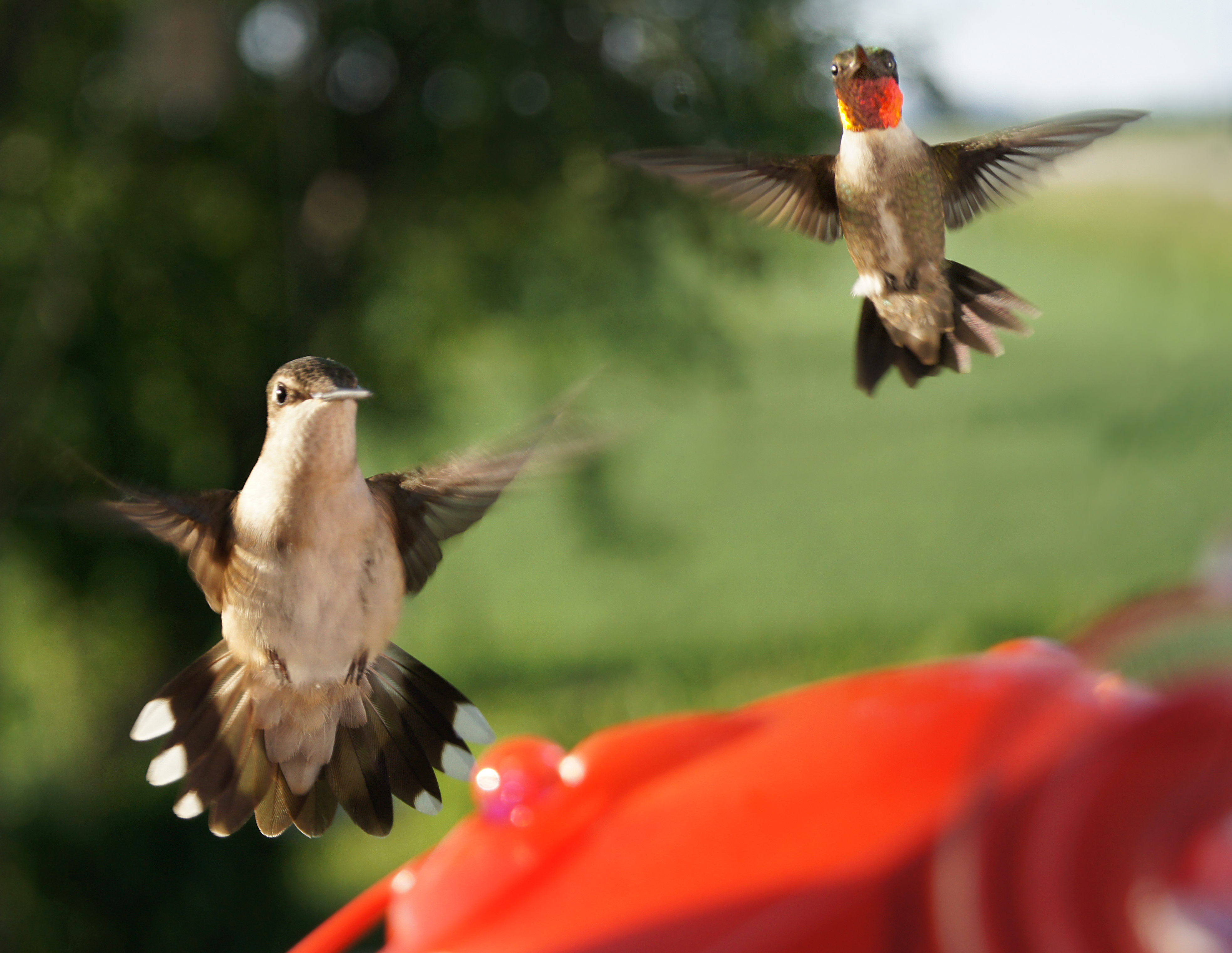 We have half a dozen hummingbirds that hang around our home through the summer. We provide four different feeders for them. You would think that would be enough to go around, but they always seem to be sparing for position at the feeders. Each feeder has plenty of room with multiple feeding positions, but they don’t seem to be interested in sharing.
We have half a dozen hummingbirds that hang around our home through the summer. We provide four different feeders for them. You would think that would be enough to go around, but they always seem to be sparing for position at the feeders. Each feeder has plenty of room with multiple feeding positions, but they don’t seem to be interested in sharing.
When they perch on a feeder, they can never just relax and enjoy a meal. They’re always, nervously, looking around. It’s rare for them to get more than a few moments of slurping before another one comes along to chase them away.
You feel sorry for the poor little things, but I guess that’s life in the hummingbird community.
To see a larger version of the above photo, simply click on it.
Tiny Feet
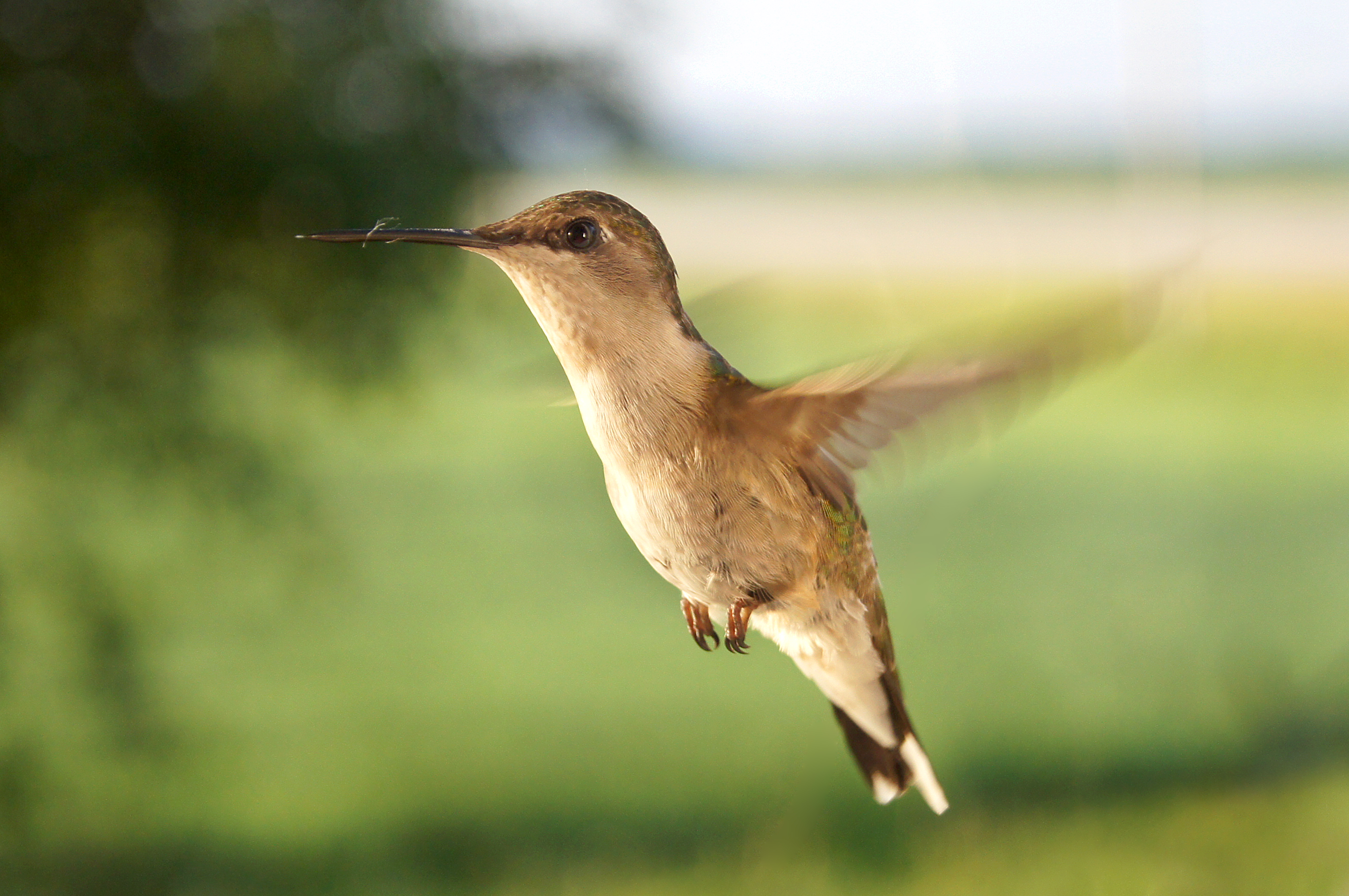
Even though hummingbirds are very tiny birds, their very tiny feet seem to be too small for their size. When you have the opportunity to actually look at a hummingbirds feet (not an easy feat, in itself) they look like tiny strands of wire.
According to worldofhummingbirds.com…
Hummingbird’s feet are not for walking. Hummingbirds do not use their feet for launching upward in flight, They let their wings do all of this work. Hummingbirds use their feet for scratching and perching. They will perch for most of their lives. Hummingbirds have four (4) toes. Three (3) toes in the front and one (1) toe, also called the hallux in the back of the foot. The hallux works much the same way a human’s thumb does and allows the hummingbird to hang on to a branch or wire.
Hummingbird legs are extremely small, short, and stubby to reduce weight. They are also quite weak. Because of this, hummingbirds do not hop.
To take a closer look at those tiny feet, click on the photo.
A Little Privacy, Please
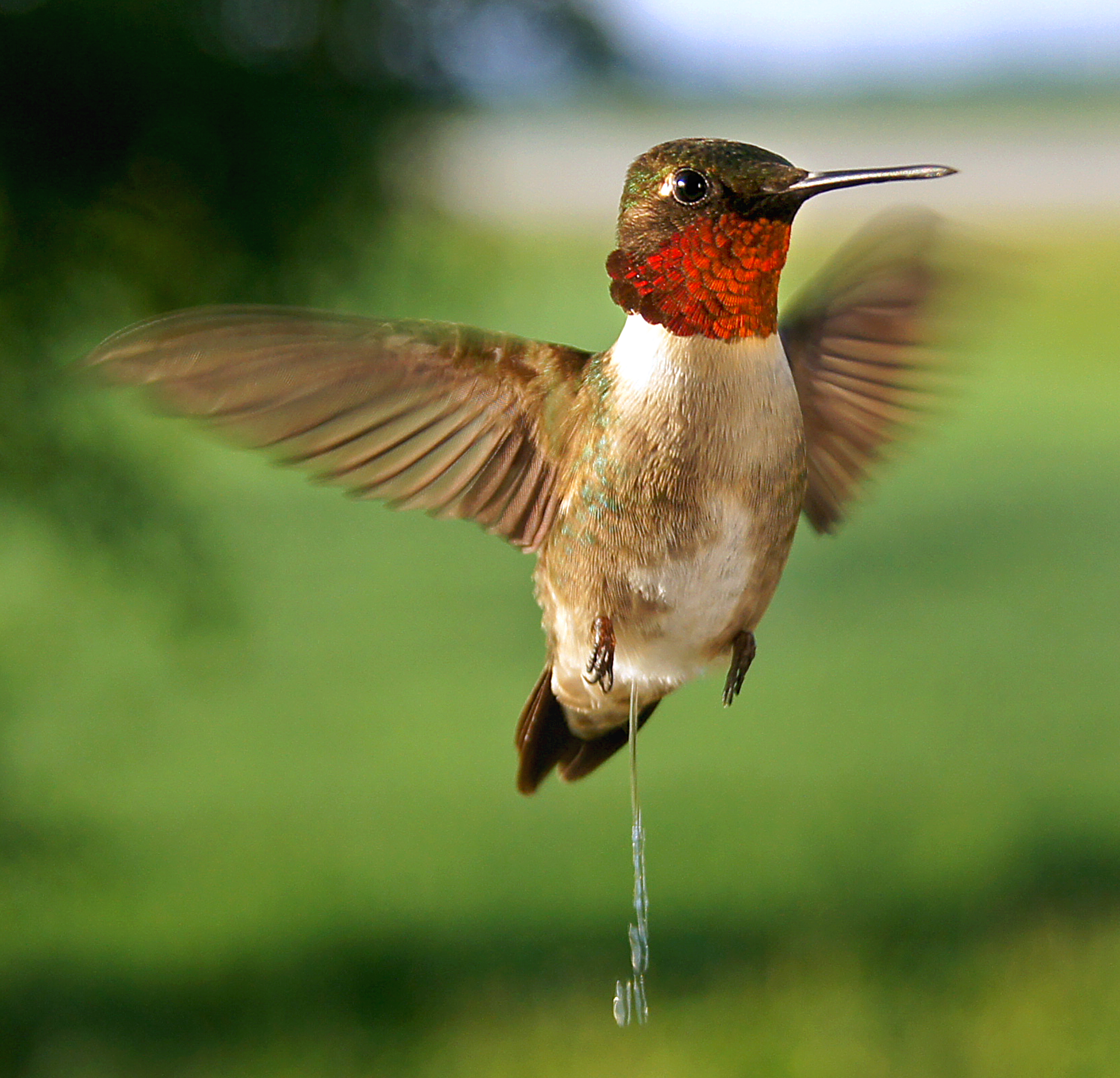
Ooops! How embarrassing! With all the hundreds of hummingbird photos I’ve been taking, it was bound to happen. This male, ruby-throated hummingbird, in all his glory, decided to take a potty break just as the shutter snapped.
I can only imagine the bathroom jokes and juvenile laughter circulating out there right now. Come on now, it’s a natural part of life. Everyone does it, right? (Although, hopefully, not in broad daylight in front of photographer.)
For those who are curious as to how the excretory system works in hummingbirds. Here’s some info from Operation Ruby Throat at www.rubythroat.org…
The Ruby-throated Hummingbird’s excretory system is typical of other birds, with paired kidneys. Liquid waste separates from digestible items in the gastrointestinal tract and goes to the kidneys, where liquid waste and ammonia (converted to uric acid before reaching the kidneys) are filtered out. Urine travels from each kidney through the ureter to the cloaca, where it mixes with solid wastes. There is no urinary bladder–yet another weight-reduction mechanism that makes flight easier–and wastes are expelled as they are produced.
(If you’re not too embarrassed and would like to see a larger version, just click on the photo.)
Can’t Hold Her Licker
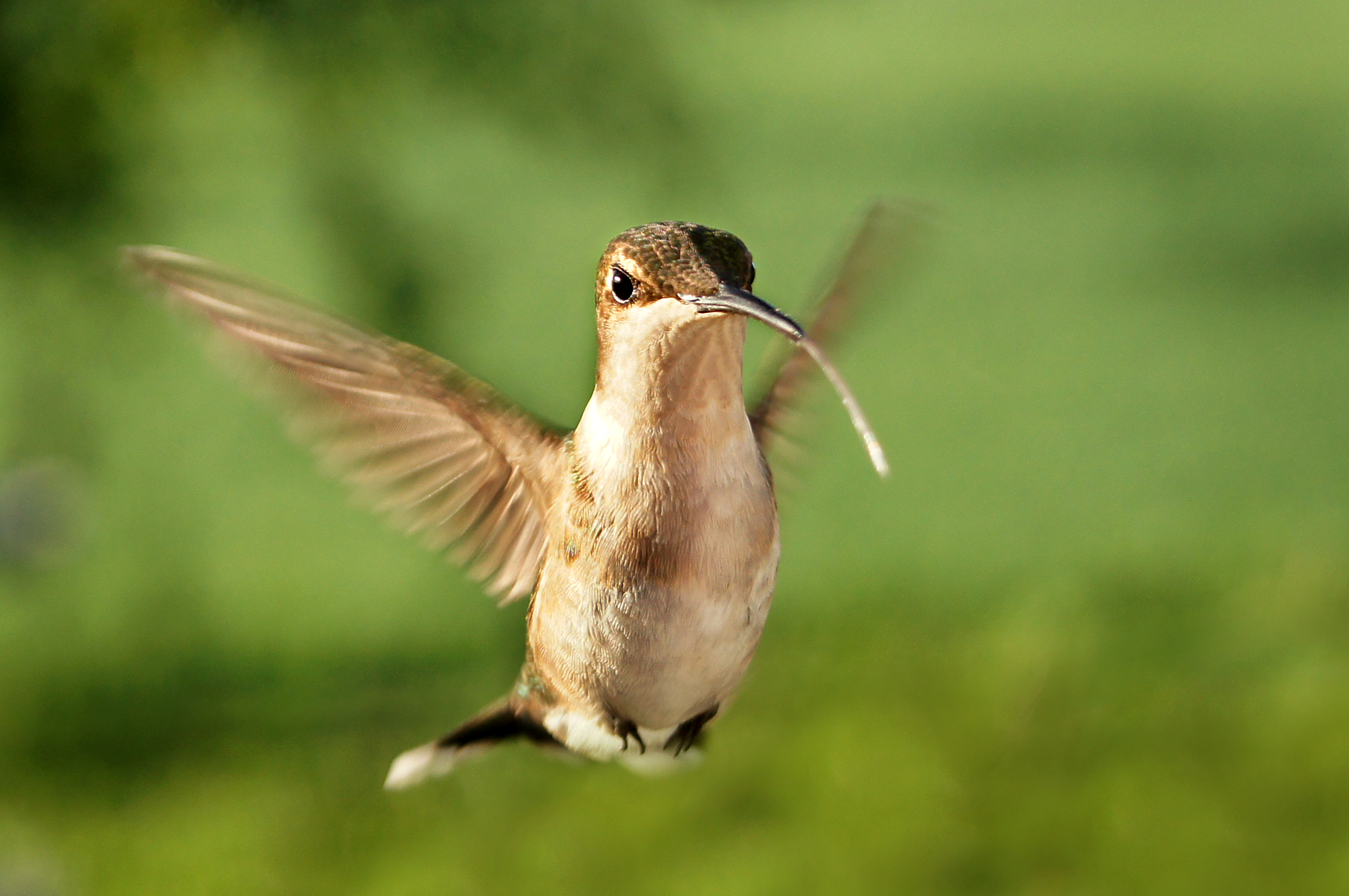
It happened so fast, I didn’t see this at the time I took the photo. This female, ruby-throated hummingbird was sticking her tongue out at me at the precise moment of the shutter snap.
It’s too bad you can’t see it clearly because the tongue was moving so fast and was out of the range of focus.
Here are some fascinating facts about the hummingbird tongue from www.worldofhummingbirds.com …
The tongue on a hummingbird is very long. It is grooved like the shape of a “W”. On the tip of the tongue are brushy hairs that help lap up nectar from a flower. A hummingbird can lap up nectar at a rate of about thirteen (13) licks per second. Hummingbirds have only a few taste buds on the tongue. Hummingbirds can taste just enough to know what is good and what is bad. They can also taste what is too sweet, not sweet enough, or just right.
(To see a larger version of this image, just click on the photo.)
Spider Assassin
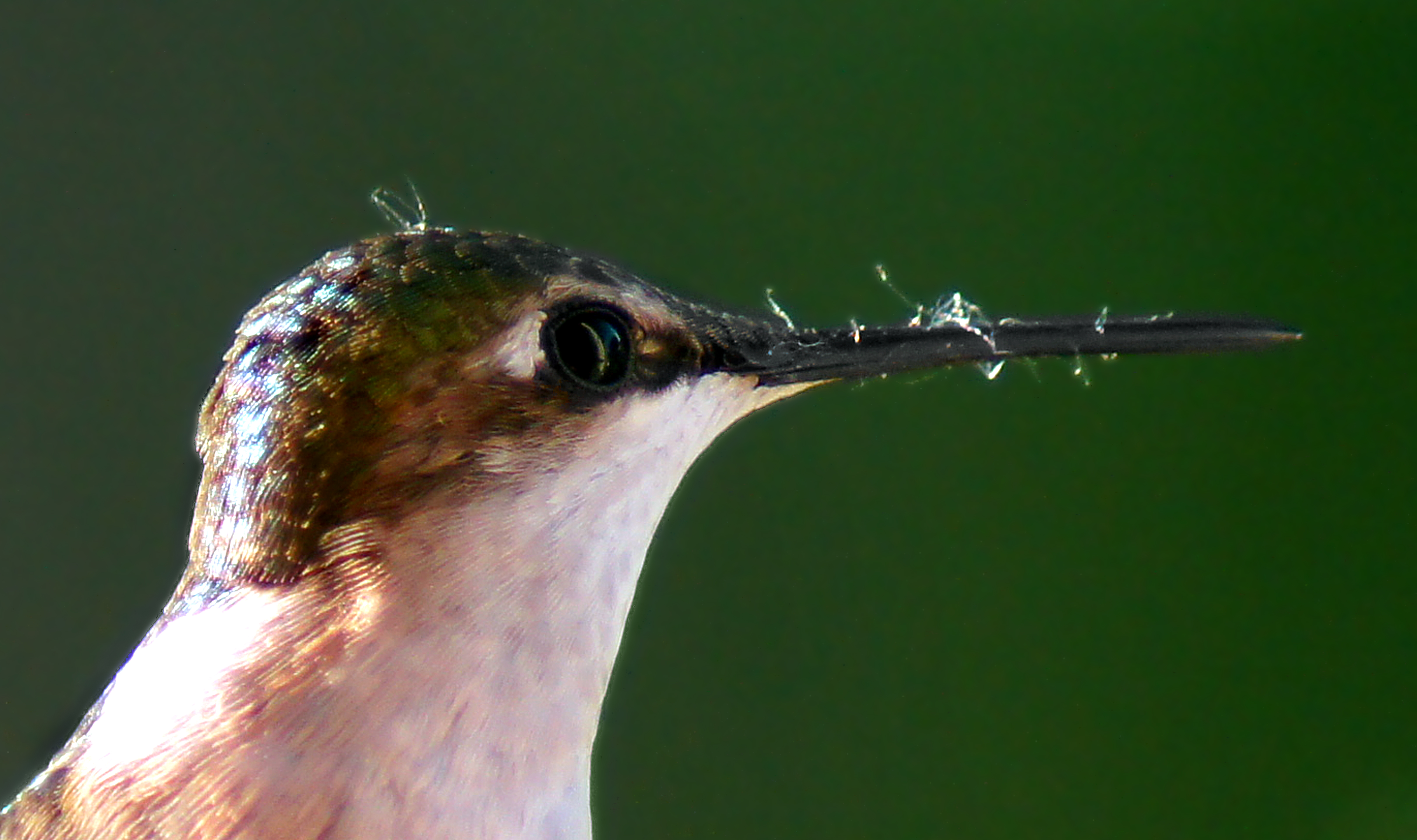
Sure…she looks sweet, petite and innocent, but beneath that tiny hummingbird breast beats the heart of a skilled killer. She is a spider assassin! (By the way, that heart beats at about 250 beats per minute while resting and about 1,260 beats per minute while flying.)
This photo could be used as evidence in an avian court to convict her. You can clearly see strands of spider web stuck to her beak and a bit on her head. As further evidence, take a look at a photo I entitled Delicate Delight; posted a few days earlier. If you look closely at this image of another female hummingbird captured in flight, you will notice little bits of spider web stuck to her beak, too.
Most people mistakenly think that a hummingbird’s diet consists solely of nectar from flowers and feeders that people hang in their garden. Hummingbirds also need protein. They get that protein from a variety of bugs…including spiders.
And here’s another fascinating fact about the world’s tiniest birds – hummingbirds use spider webs to build their nests.
Here are some notes from worldofhummingbirds.com – –
Hummingbirds love to eat small bugs like gnats, aphids, and spiders. The hummingbirds will even eat all of the bugs out of the spider web, eat the spider, and then steal the web to help build a nest.
[To build a nest] She likes to use nice soft material like moss and lichen. She also likes to use cotton fluffs, bits of willows, soft plant pieces, dryer lint, and leaf hairs. She will bring these items back to her nest a little at a time, gluing it all together with spider webs. The spider webs make terrific glue for the nest, allow the nest to stretch and be flexible as the baby hummingbirds grow, and make it easier for the mother hummingbird to repair the nest when kids do what kids do.
If you learned something new and liked the photo, please share this post with a friend and leave a comment. (Thanks!)
(This image has been enlarged a great deal to make it easier to see the spider web. If you’d like to see an even larger version, simply click on the photo.)
Humdinger
hum·ding·er/ˈhəmˈdiNGər / Noun: A remarkable or outstanding person or thing of its kind.
There’s little that compares to the dazzle of a male ruby-throated humming bird when the light hits it just right. If you’re able to watch one while he’s perched, you’ll see flashes of brilliant red with just a slight turn of his head.
Even though the sunlight is coming more from behind this bird, I used a shiny surface to reflect some of that sunlight to the front side, bringing out the colors of his gorget (the neck area).
(Click the image to see a larger version.)
All of the photos I post are available for purchase. If you’d like to buy one, click on the blue “Buy this Online” bar below for a variety of print and frame options or contact me for digital purchase and licensing options.
Delicate Delight
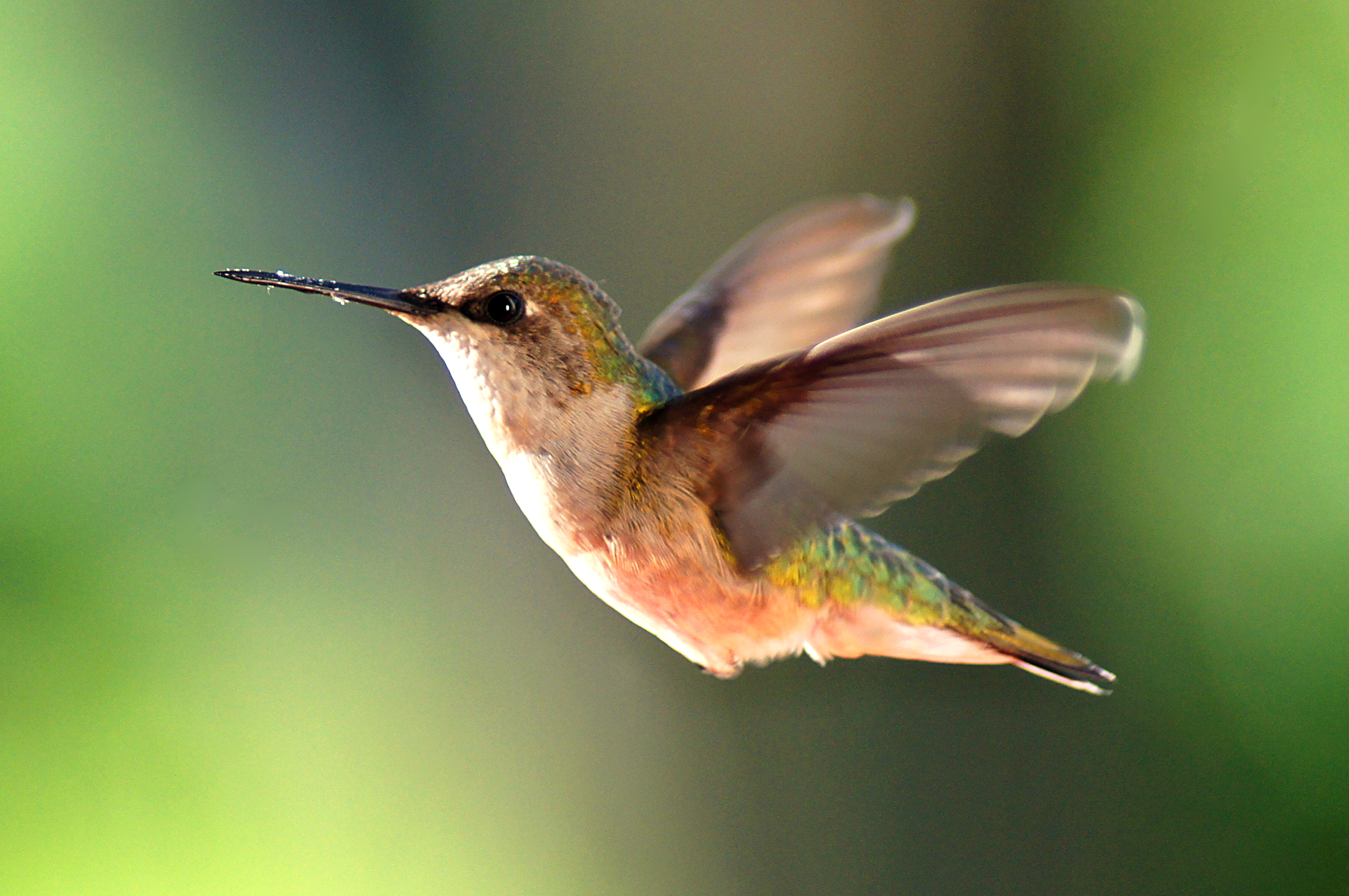
Hummingbirds are fascinating and beautiful…the perfect subject to photograph…and one of the most challenging.
This is an image I captured early last Saturday morning (6/24/11). I spent a couple of hours and snapped more than 400 photos to come up with a handful of worthwhile images.
Snapping more than 400 photos sounds a lot harder than it was. My camera has a setting that allows me to press and hold the shutter button and take up to 10 frames per second. With that kind of speed, you can knock out an SD card full of images pretty quick.
The greatest challenge, at least for me, is to capture the birds in focus. When in flight, they are constantly zipping in and out, back and forth, up and down. I had an embarrassing amount of empty frames, where the bird had left the field of view before I could snap…or stop snapping. When I did catch the bird in the frame, they often were blurry.
With enough patience, some experimentation and a bit of dumb luck, I was able to get a few “keepers.” This is a good example. I’ll be posting a few more in the next few days, so check back.
(Click the image to see a larger version.)
All of the photos I post are available for purchase. If you’d like to buy one, click on the blue “Buy this Online” bar below for a variety of print and frame options or contact me for digital purchase and licensing options.






